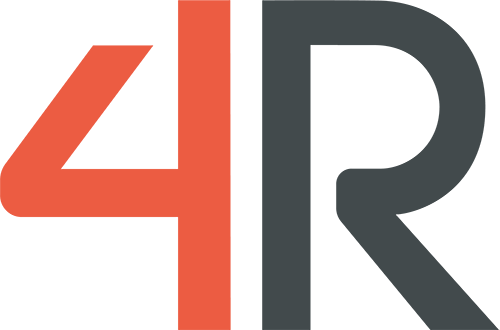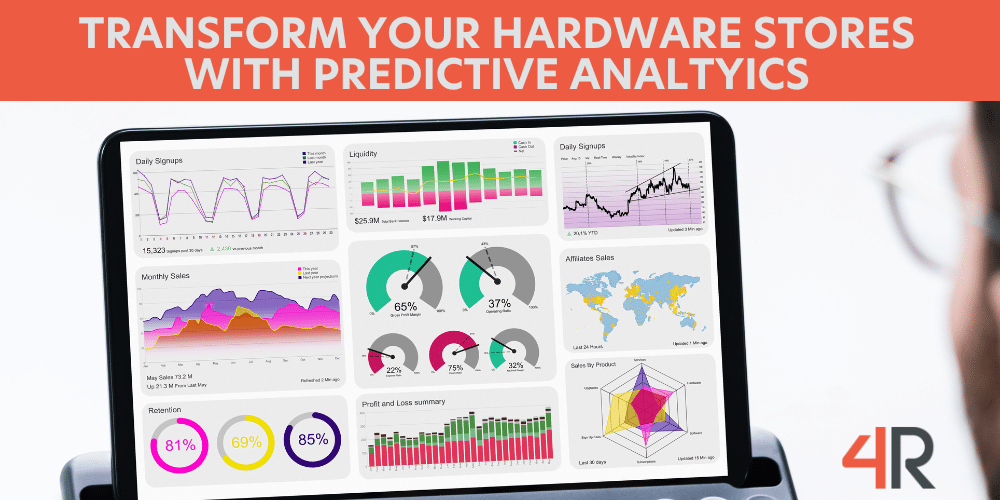Predictive analytics used to be a tool available only to big boxes. Not anymore.
In today’s competitive retail landscape, independent hardware retailers face numerous challenges, from fluctuating customer demands to intense competition from big box retailers and online giants. A powerful tool that can help independent hardware retail stores thrive is predictive analytics.
This post explores how businesses can leverage predictive analytics to address common business problems and transform how they manage inventory, improve customer satisfaction, and boost profitability.
Key Takeaways:
- Retail predictive analytics do more for businesses than simply forecasting risks and trends.
- Six ways predictive analytics transform independent hardware retail businesses include:
- Generating insights for strategic decision making.
- Increasing operational efficiency by automating time-consuming, error-prone manual tasks and predicting risks before they become problems.
- Accurately forecasting consumer demand to improve supply chain planning and inventory management.
- Balancing inventory levels, to reduce inventory investment risks, like stock-outs or excess inventory.
- Making it easier for customers to find things they need and want to improve the customer experience and satisfaction.
- Eliminating one-size-fits-all product and pricing strategies to maximize revenue at each store location.
- Data fuels predictive analytics, but requires more effort than just collecting it from sales systems, ERP platforms, and other operational technologies to generate better forecasts
What is Retail Predictive Analytics
Predictive analytics helps retailers address business problems that hinder operational performance and business results. It uses data collected from operational systems and applies data science, machine learning, and statistical models to analyze and predict future trends. Retailers leverage predictive analytics for insights for strategic decision making and for automation that improve operational efficiency, all which transforms the business.
More than just forecasting risks and trends, predictive analytics provides deeper insights into current and future performance. It allows retailers to make the changes necessary to compete in tough markets.
Business Problem 1: Lacking actionable insights needed to make strategic decisions.
Making informed business decisions in a rapidly changing market can be difficult without reliable or complete internal and external data.
Predictive analytics provides actionable insights that support strategic decision-making. An analytical platform, like the one offered by 4R, delivers comprehensive reports and dashboards that highlight key trends and performance metrics. This empowers you to make data-driven decisions that enhance store performance and profitability.
Business Problem 2: Manual, time-consuming steps in the supply chain management and inventory planning processes hinder agility.
Manually collecting and consolidating data out of disparate systems to generate reports make the inventory management and planning processes time-consuming and prone to errors. Additionally, the analysis can be out-date and not actionable once it’s complete. Businesses struggle to respond quickly to consumer needs and market trends.
Predictive analytics will give you continuous access to that data and the advantage of real-time metrics. Because the information is readily available, it can be used to automate supply chain and inventory management processes with increased accuracy and time-savings.
Additionally, predictive analytics can identify risks. By addressing the risks before they become problems, like product delays or supply chain breakdowns, predictive analytics helps keep your retail operations running smoothly.
Business Problem 3: Inaccurate or untimely forecasts of consumer demand due to insufficient data and manual processes.
Traditional methods of demand forecasting often rely on historical sales data alone. In our experience, this data can be insufficient in capturing current market trends and customer preferences.
Predictive analytics uses a combination of historical data, current trends, and external factors (like weather patterns and economic indicators) to forecast demand with greater accuracy. Accurate demand forecasts is the key to solving a multitude of retail inventory planning problems that may lead to stalled inventory turns and low customer satisfaction and stagnant profits.
Business Problem 4: High and chronic inventory investment risks, like stock-outs or excess inventory.
A common challenge for independent hardware retailers is balancing inventory levels to meet customer demand without tying up excessive capital in stock.
Predictive analytics helps you maintain optimal inventory levels by predicting which products will be in demand and when by recommending optimal stock levels for each SKU. This minimizes holding costs and maximizes product profitability, ensuring you always have what your customers need.
Business Problem 5: Lagging customer experience and low repeat customer and retention rate.
Customers expect to find the products they need when they visit your store. Failing to meet these expectations can lead to lost sales and decreased customer loyalty.
Predictive analytics ensures that high-demand products are always in stock, enhancing the customer shopping experience. It enables you to anticipate customer needs and ensure that popular items are readily available. This improves customer satisfaction and encourages repeat business.
Business Problem 6: Difficulty placing the right products and setting the right prices, especially with multiple locations.
Having multiple locations increases the complexity of identifying and allocating the right the products and pricing strategies. Different stores may serve different markets, even in the same state. Customer demographics, preference, seasonal changes and variations (e.g., lake affect snow) may differ from area to area. Creating a one-size-fits-all inventory plan can lead to problems like wrong products or the right products in the wrong quantities in the stores.
Predictive analytics can help you plan product allocation and develop dynamic pricing strategies based on demand forecasts, competitor pricing and other market conditions. It analyzes market trends and customer behavior at every location to help you set competitive prices that attract customers. Eliminating one-size-fits-all product and pricing strategies maximizes margins and revenue at each store location.
Supercharge Your Operational Data
Independent hardware retailers can achieve the ultimate goal that drives profits– getting the right inventory, in the right amounts to the right locations, and at the right price. If you have POS, ERP and other operational systems, you have the data needed. But to achieve this ultimate goal, you need predictive analytics.
Predictive analytics supercharges your operational data by leveraging machine learning and artificial intelligence to forecasts demand with remarkable accuracy, considering factors such as seasonal trends, promotional activities, and changing consumer behaviors. As a result, retailers and businesses can balance inventory levels, set pricing strategies and plan the right mix of products to offer, at every location, leading toward increased sales, revenue, and customer satisfaction.
Ready to Transform Your Hardware Store with Predictive Analytics?
In retail, one thing you can count on is that the needs and wants of customers will change constantly. Demand changes constantly. If the business challenges discussed in this post resonate with you, then it is time to transform your hardware store with predictive analytics.
4R offers advanced predictive analytics tools designed to help independent hardware retailers navigate the complexities of modern retail and achieve sustainable growth.
Contact 4R or request a demo today!


